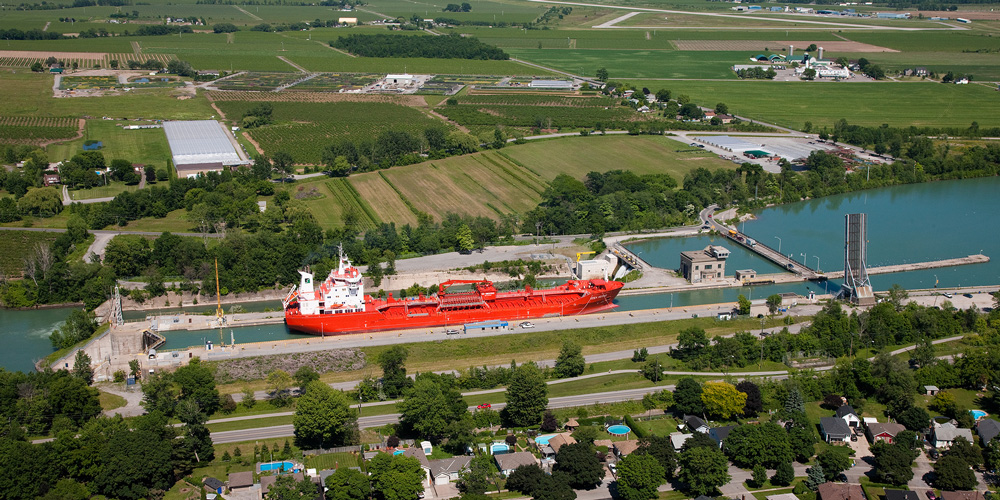Seaway Opens 54th Navigation Season Projecting 3% Increase for 2012
March 22, 2012
Great Lakes Seaway System Supports 227,000 Jobs
St. Catharines, Ontario (March 22, 2012) – The St. Lawrence Seaway Management Corporation (SLSMC) predicted that cargo shipments would rise by about three per cent to 38.6 million tonnes for 2012 as it marked the official opening of its 54th navigation season today at Lock 3 of the Welland Canal. Exports of coal are expected to be a bright spot, as producers in Montana route their product by rail to Great Lakes ports, where the cargo is loaded onto lakers and brought to the Port of Quebec via the Seaway. The coal is subsequently trans-shipped to ocean vessels destined for Europe, avoiding congested coastal ports.
Rob Bryson from Parrish and Heimbecker’s Hamilton operation, and Donald Gallienne from Aluminerie Alouette, served as keynote speakers at the event. Canadian agribusiness firm Parrish and Heimbecker, has invested $30 million in expanding its grain handling facilities strategically located at the Port of Hamilton, testifying to the enduring value of the Seaway in cost effectively moving grain. Aluminerie Alouette, the largest aluminum smelter in North America, uses the Seaway to transport substantial volumes of aluminum ingots on a tug / barge combination from its facility in Sept-Iles (Quebec) to Great Lakes ports in the U.S. Both speakers testified to the critical role that marine transportation plays in their respective firms’ ability to compete effectively in a global marketplace.
The tug / barge used to transport the aluminum ingots, McKeil Marine’s Wilf Seymour/Alouette Spirit, served as the opening vessel at Lock 3 of the Welland Canal. “McKeil is honoured to be part of the Seaway opening celebration,” said Steve Fletcher, President of McKeil Marine Limited. “Our company’s innovative marine solutions provide shippers with a cost effective and environmentally friendly means of moving cargo. The Seaway has been a strong advocate in shifting more cargo onto our waterways, which also serves to ease pressure on congested road and rail links.”
As a result of the tug and barge operation, tens of thousands of truckloads are being shifted from two and four lane highways to the Seaway. “We are pleased to see continued momentum in the burgeoning tug and barge sector,” said Bruce Hodgson, Director of Market Development for the SLSMC. “The Aluminerie Alouette shipments serve as a great example of how marine transportation directly supports the operation of a major North American business and, at the same time, bolsters our quality of life.
Canadian and international carriers are in the process of building new vessels, with some scheduled to begin transiting Seaway waters in 2012. Collister Johnson Jr., Administrator of the U.S. Saint Lawrence Seaway Development Corporation, noted that with carriers investing hundreds of millions of dollars in fleet renewal, the Seaway system’s future is bright. “Marine transportation is already the most energy efficient means of moving cargo, and these new vessels will increase energy efficiency by up to 40% in addition to offering leading edge emissions performance,” said Johnson.
A recently published economic impact study, commissioned by Marine Delivers, demonstrates the significant role that the Great Lakes / Seaway system plays in supporting the Canadian and U.S. economies. Some 227,000 jobs and $34 billion in economic activity are supported by the movement of goods within the Great Lakes / Seaway waterway. For more information on the Seaway, including access to the full text of the economic impact study, please consult the www.greatlakes-seaway.com website.






